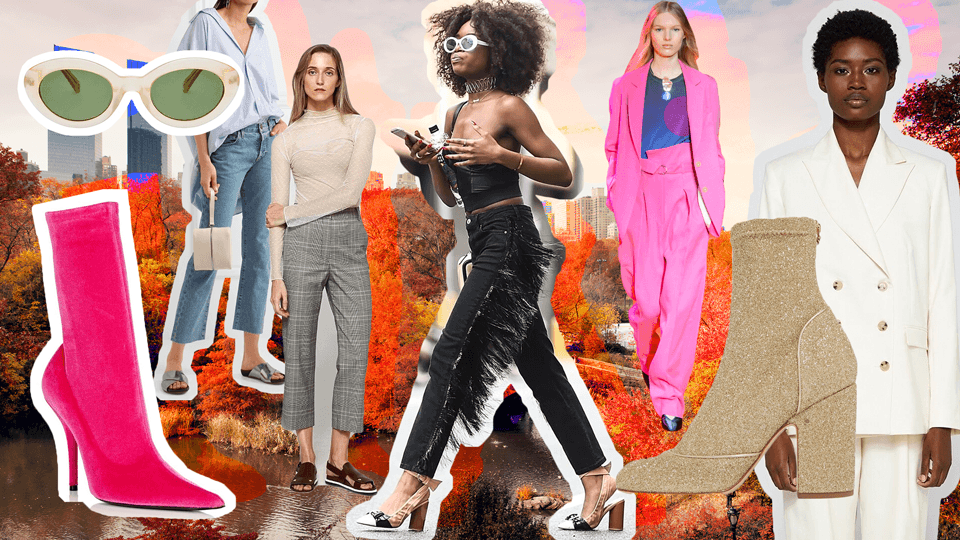
The world of fashion is ever-changing, with new trends, technologies, and designers constantly shaping its future. From sustainable practices to digital innovations, the latest fashion update reveals how the industry is adapting to both consumer needs and environmental challenges. In this rapidly evolving world, it is essential for fashion enthusiasts, designers, and retailers to stay informed about the shifts that are taking place. Here are the most exciting developments in fashion right now.
1. Sustainability Takes Center Stage
A major fashion update that has been dominating the industry in recent years is the heightened focus on sustainability. Consumers are increasingly conscious of their environmental footprint, prompting fashion brands to adopt eco-friendly practices. From the materials used to the methods of production, sustainability is no longer a trend—it’s a necessity.
Many brands are moving towards using organic fabrics, such as cotton and linen, and avoiding harmful chemicals in production. Recycled materials, such as polyester derived from plastic bottles, are becoming more common in collections. Additionally, the concept of circular fashion is gaining traction. Brands are designing garments that can be reused, repaired, or recycled rather than disposed of after a single use.
The rise of second-hand shopping and vintage clothing platforms has further cemented sustainability as a key fashion update. Consumers now have more access to pre-loved garments through apps like Depop, Poshmark, and ThredUp, which not only help reduce waste but also encourage a unique and personal approach to fashion.
2. Digital Fashion and Virtual Runways
Another exciting fashion update that has emerged is the integration of digital technology in fashion. The virtual world is increasingly influencing the way people interact with fashion, as virtual fashion shows, augmented reality (AR), and digital clothing continue to shape the industry. These innovations offer a completely new way to present and consume fashion.
Fashion brands like Balenciaga and Gucci have experimented with virtual runways, allowing audiences to experience collections without being physically present. Additionally, digital wardrobes and virtual garments have become a growing trend, especially among younger consumers who are accustomed to living part of their lives in virtual spaces. This digital-first fashion experience also appeals to gamers, as digital outfits are designed for characters in online games and platforms.
The use of Non-Fungible Tokens (NFTs) in fashion has also been a fashion update that has garnered attention. Designers are creating limited-edition digital fashion items that can be bought and sold as NFTs, further merging the worlds of fashion and technology. These virtual items not only provide consumers with a new form of fashion expression but also offer the potential for new revenue streams for designers and brands.
3. Inclusivity and Diversity in Fashion
Over the last few years, inclusivity and diversity have become central themes in fashion updates. The industry is finally shifting toward celebrating all body types, genders, and ethnicities, breaking away from the traditional, narrow beauty standards that once dominated the scene.
Major brands and designers are increasingly embracing diversity on the runway, featuring models of various sizes, colors, and backgrounds. The rise of plus-size models and transgender representation in advertisements and fashion shows has been a significant step forward in creating a more inclusive environment for all individuals.
The demand for fashion that caters to a broader range of body types and lifestyles has led to a surge in adaptive fashion, which provides clothing for people with disabilities. Retailers are responding to the need for more diverse offerings, ensuring that everyone has access to stylish and functional garments.
4. Comfort-First Fashion
Comfort is no longer an afterthought—it’s become a top priority for both consumers and designers. With the global pandemic leading to increased time spent at home, the demand for comfortable yet stylish clothing has skyrocketed. Loungewear, athleisure, and relaxed silhouettes have become some of the most sought-after trends in the latest fashion update.
Brands like Nike, Lululemon, and Adidas have continued to dominate the athleisure market, combining comfort and performance with style. These pieces, designed for both working out and everyday wear, have become wardrobe staples for many individuals. Additionally, the rise of minimalist fashion has allowed for versatile pieces that are both comfortable and easy to mix and match.
The focus on comfort extends beyond activewear and casual wear. Designers are rethinking office attire, incorporating softer fabrics and more relaxed fits into professional clothing. As work-from-home culture continues to be popular, fashion is adapting to the changing demands for clothing that offers both style and comfort.
5. The Return of Y2K and Nostalgia
One of the most intriguing fashion updates involves the return of early 2000s fashion, often referred to as Y2K style. The influence of nostalgia is undeniable, as fashion cycles bring back trends from the past. Low-rise jeans, butterfly clips, and graphic tees are making their way back onto runways and into street style.
This resurgence of Y2K fashion is driven by younger generations who are rediscovering the aesthetic of the early 2000s through social media platforms like TikTok and Instagram. Celebrities and influencers have played a significant role in bringing these styles back, making them more relevant than ever.
Conclusion
The fashion update landscape is rich with innovation, creativity, and change. From sustainability and digital fashion to inclusivity and comfort-first trends, the industry is undergoing a profound transformation. These updates not only reflect the evolving desires of consumers but also the broader societal and environmental challenges we face. As the world of fashion continues to evolve, these trends will continue to shape the way we dress and express ourselves. Whether through sustainable practices, digital innovation, or inclusivity, the future of fashion looks bright and exciting.